The Crusades, ostensibly, were a series of armed expeditions launched by Christian states against Muslim forces to seize control of territory deemed sacred by both parties — AKA, the “Holy Land.” The fighting spanned several centuries and produced some of the bloodiest combat in military history, motivated by both heavenly salvation and earthly plunder.
Beginning in the late 11th century, soldiers would endure innumerable hardships during these long, often treacherous journeys. These church-sanctioned escapades would eventually come to an end, but the bitter divide of East vs. West continues today throughout much of the Middle East with the chance of peace about as likely as the Yankees and Red Sox ever playing nice.
8. The Pope’s Speech
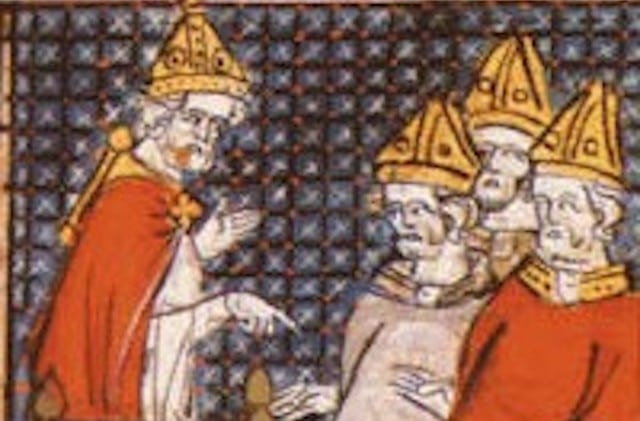
On November 27, 1095, Pope Urban II addressed the Council of Clermont in France, where several hundred clerics and noblemen had gathered. He passionately decried the suffering of Christians in the Byzantine Empire at the hands of the powerful Seljuk Turks. The Pontiff then implored all Christians to embark on a mission to reclaim Jerusalem from Muslim forces.
The Pope’s spirited address promised absolution and remission of sins for anyone who died while doing the Lord’s work and culminated with the war cry, “Deus vult!” (“God wills it!”) The recruiting drive proved successful — and cemented his legacy for having instigated the Holy Wars. Although exact numbers vary, up to 100,000 people would take part in the initial mission to rescue the ancient city.
During this time, Urban seized on the opportunity to increase the power of the papacy. European nobles would also benefit from the acquisition of land and plunder, conquering and killing anyone along the way considered adversarial to their cause.
7. Sign of the Cross

The name given to the Holy Wars derives from the medieval French word for crois, meaning “cross.” Combatants consisting of nobles, knights, and peasants took a public, binding ecclesiastical vow to join a crusade that required a red cross sewn onto their garments as a sign of the pledge. The cross could only be removed after completing their pilgrimage.
Although soldiers didn’t receive wages while fighting in the service of Christ, they received certain privileges from the Church. Soldiers received protection for their family and property, hospitality during the trip, exemption from tolls and taxes, and immunity from arrest.
Upon returning home, soldiers who had managed to avoid being killed or taken prisoner were granted a plenary indulgence for completing the pilgrimage. Any acquired booty would have been considered well-earned spoils of war — not to mention the pride of rolling up their sleeves to reveal battle scars down at the local watering hole.
6. The Lonnnnnnng Road
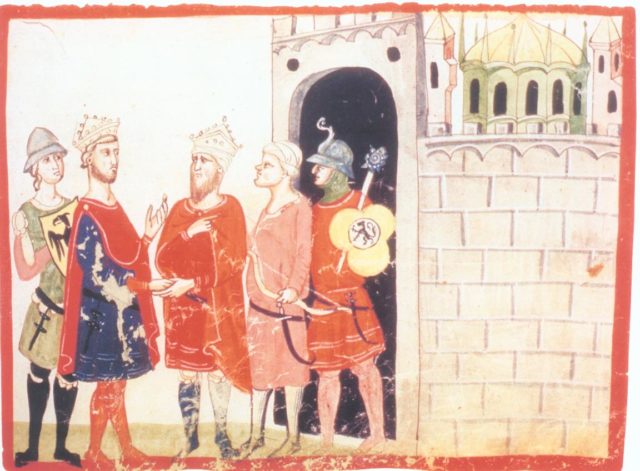
The First Crusade got underway in France in 1096 with an army consisting of soldiers throughout Europe. Despite the multi-national coalition, the troops would be called “Franks” by their Muslim foes. The round trip trek would often take years to complete, covering as many as 2,500 miles each way — or roughly the same distance as going from L.A. to Pittsburgh on foot.
Crusading took on many different forms, with each expedition launched for distinct reasons with several years in between separating the campaigns. In addition to the longer trips against Muslim forces, battles also involved pagan tribes and heretics scattered across the European continent.
Enemies of the Pope were also frequently targeted. Even the Holy Roman Emperor Frederick II (a devout Christian monarch) didn’t get a pass and would be excommunicated three times and branded the Antichrist by Pope Gregory XI.
5. Strategy and Tactics
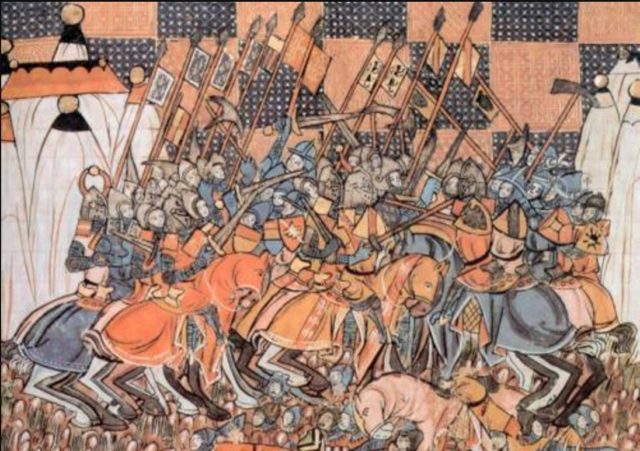
The holy wars nearly ended in the disaster for Christian forces early on. Led by a coalition of European knights, the crusaders found themselves surrounded by the enemy under Turkish commander Kilij Arslan in Anatolia. In short, they needed a miracle, which fortunately for them, arrived in the form of a fast-thinking Italian prince named Bohemond of Taranto.
After having fought several smaller skirmishes, the Battle of Dorylaeum introduced the first full-scale confrontation between western armies and Muslim forces. The crusaders faced not only a constant torrent of arrows from mounted archers but the effects of the scorching, arid weather on unfamiliar ground.
Bohemond quickly realized that conventional infantry and cavalry charges were ineffective against a more mobile army relying on hit-and-run tactics. He then ordered his heavily armored knights to dismount and form a protective shield around the foot soldiers, horses, and supplies. The shift in military structure also allowed Bohemond’s line to hold until reinforcements arrived in mass as the Turks eventually exhausted their resources.
In the end, the crusaders notched an impressive victory with a new strategy that would influence future battles in the drive towards Jerusalem. Moreover, the triumph helped perpetuate a myth of divine intervention and serve as a recruiting tool, declaring that crusaders were under God’s protection.
4. Fall To Your Knees And Repent If You Please
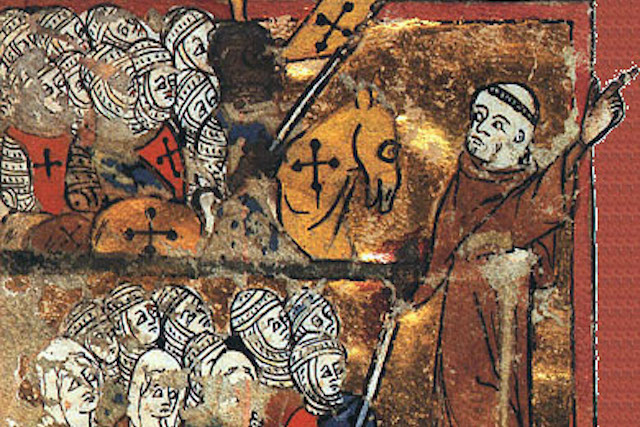
In the song “Exciter” by heavy metal gods Judas Priest, the theme of salvation is delivered through shrieking vocals, and thundering dual-lead electric guitars. The crusaders, however, used a more physical approach by mandating that all sinners must convert to Christianity or face righteous execution in the name of God. So much for Christ’s teachings of tolerance and brotherly love.
The Pope‘s punishers were also given the green light to rape, pillage, and plunder at will — along with desecrating religious monuments just for good measure. Although the conflicts typically involved the subjugation of Muslims, other faiths came under attack as well.
As a precursor to the First Crusade, a movement known as the People’s Crusade led by a fiery monk named Peter the Hermit resulted in a murderous rampage against the Jewish population along the Rhine river in France and Germany. Although they didn’t have the official blessing of the Church, that didn’t stop them from their wanton killing spree en route to the Holy Land.
Eventually, the ragtag army comprised of mostly ill-equipped peasants were slaughtered by well-organized Turkish forces at the Battle of Civetot in northwestern Anatolia. Suffice to say, most Biblical scholars would characterize this as ‘reaping what you sow.’
3. Crusader Estates
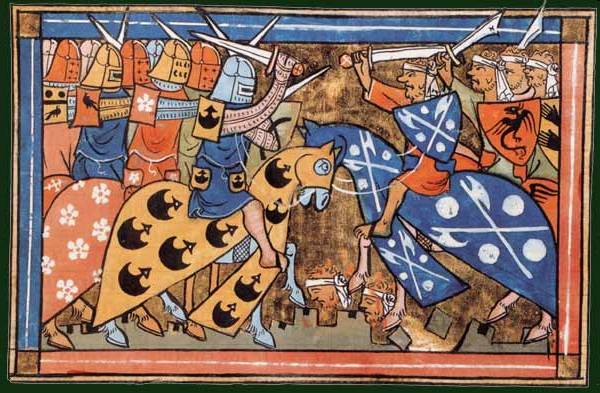
Glossy real estate brochures didn’t exist in the middle ages. But if they did, they might sound something like this: Imagine a gated community, where Westerners live in non-exist tranquility on sun-kissed, pilfered land, and awaken each day with threats by the original inhabitants who want to bludgeon them to death. Welcome to the not-so-friendly, Crusader Estates.
The crusaders were spurred on by various motivations and rewards that included grabbing some turf they could call home. The majority were usually landless nobles or peasants in search of a better future by grabbing some land from their Muslim enemies. Thus, crusader states were born.
After establishing the Kingdom of Jerusalem, other developments popped up while introducing the notion of class distinctions and feudalism throughout the middle east. Some of the larger settlements included the County of Edessa, the Principality of Antioch, and the County of Tripoli.
2. Revenge of Kurds
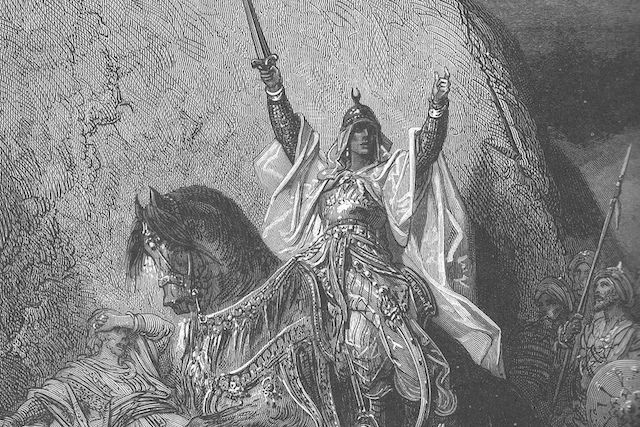
He is known by contemporary Muslims as simply “Al Nassar” (“The Victorious”). To European crusaders, however, the name Saladin came to be known as a fearsome military leader, who founded the Ayyubid dynasty and sought nothing less than uniting his people against a common enemy.
Born into a Kurdish Sunni Muslim family in modern-day Iraq in 1137, Saladin spent his formative years in Damascus, where he studied Greek philosophy, mathematics, poetry, astronomy, and law. He would also become an ardent student of the Koran while immersing himself in all aspects of warfare.
He later became the first sultan of Egypt and Syria, patron of Mecca and Medina, and Lord of Arabia. After declaring a jihad against the Crusader States, he defeated the invaders at the Battle of Hattin in 1187. The victory also allowed him to later re-conquer Jerusalem, along with a large amount of territory — conquests that would inspire the launching of the Third Crusade.
1. Plunder over Piety
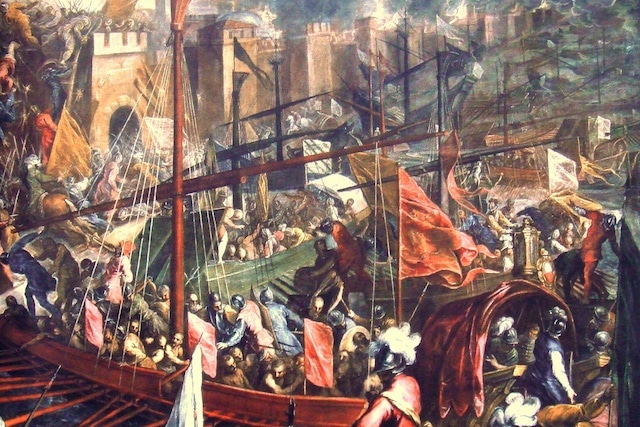
Among the horrifying, brutal conquests in history, the Sack of Constantinople is in a category all by itself. Before 1204, the rich, vibrant city at the crossroads of Europe and Asia had served as the capital of the Byzantine Empire. But a nasty dispute fuelled by greed, corruption, nepotism, and poor leadership (sound familiar?) during the Fourth Crusade culminated in the frenzied bloodshed and systematic looting of the greatest city in Christendom.
The deep rot in Constantinople had been festering for years — finally reaching a boiling point when the exiled Byzantine prince Alexius bribed the crusaders to put him on the throne in July 1203. Six months later, however, he was murdered by a rival faction. Naturally, the crusaders sensed a (literally) golden opportunity to pounce and responded by laying siege to the city while randomly massacring thousands of its citizens.
The utter ruin and instability caused by the crusaders would later help pave the way for the Mongol invasion in the mid 13th century, creating further fragmentation and chaos to the region. The indulgence of the papal-pleasing pillagers also later helped launch the Reformation and Counter-Reformation of the 15th century.